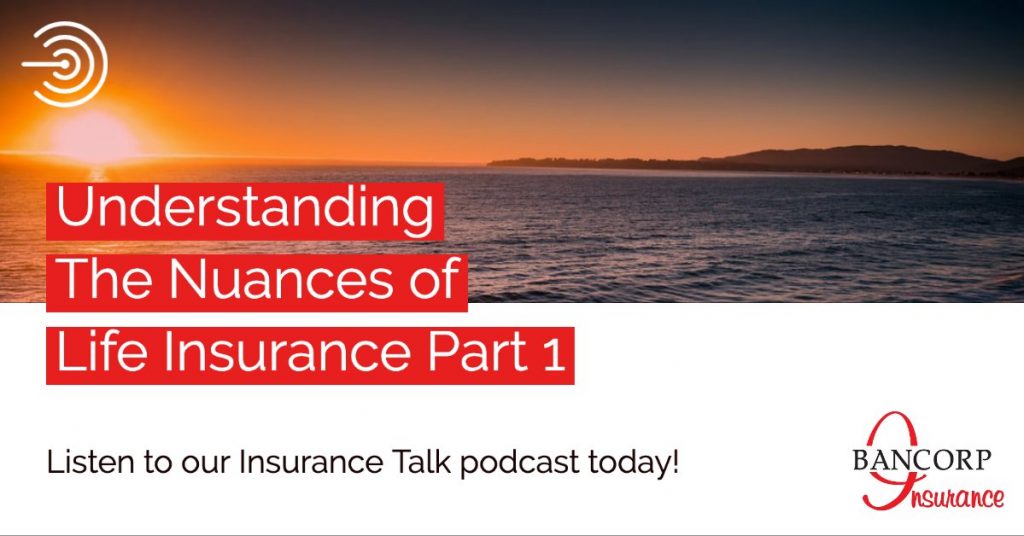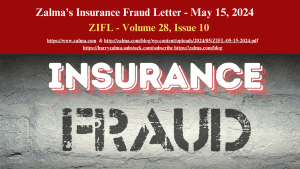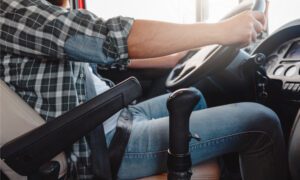What You Need to Know About Drones

Whether you are buying a drone as a hobby or to use in your business, here is what you need to know about drones. People use them both for recreation and business purposes. Although we might think of drones as super cool fun toys, the reality is that drones, sometimes referred to as Unmanned Aerial Vehicles (UAVs) and Unmanned Aerial Systems (UAS) are far more sophisticated than your average “toy”. The FAA classifies most of them as aircraft and you may or may not have coverage under you homeowners or business owner’s insurance.
Drones and Insurance – Listen to the Podcast Here
Drones that most homeowners buy are recreational or hobby UAV’s. These can cost anywhere from $200.00 up to $5,000.00 depending on how you are using them. Drones can be expensive, and they are easy to crash. It is understandable that if you buy a Drone you will want to be able to replace it if you crash it and it can no longer fly.
The cost to replace a crashed Drone is only the beginning what a Drone can cost you. The real risk is if you are flying your Drone and you cause someone else or their property harm. Common examples where your liability insurance would come into play is:
Flying over private property and taking pictures without the owner’s consent.Flying into someone else’s property and damaging it.Infringing on the privacy of others.Getting hung up on power lines or stuck in a neighbor’s tree. A couple of years ago a Drone pilot was
responsible for shutting the power down for over 500 residents in his neighborhood.Federal, state, county, or municipality laws concerning the operation of drones.Know the laws in the area you are planning to fly your drone.
Your homeowner’s insurance may not cover you for the liability you incur when flying your drone. Specifically, because a drone as Unmanned Aerial Vehicles (UAVs) or an Unmanned Aerial Systems (UAS) and is specially excluded as being an aircraft under most homeowners’ policies. The damage to your drone if you crash will not be covered either. Aircraft is excluded. The best advice I can give you is to buy Drone insurance and make sure you are covered. It’s not that expensive for most hobbyist.
Hobby Drone Pilots You Can Buy Drone Insurance From:
IDRA: The International Drone Racing Association (IDRA) offers liability insurance for drone pilots that has no drone limit, no deductibles, and worldwide coverage. The $1 million policy costs $265 annually and activates within 24 hours of purchase. The policy is valid for 1 year, covering all potential liabilities from recreational flying, racing, and training.Equipment insurance through the manufacturer: Manufactures including DJI, Go Pro and Yuneec offer equipment insurance for an additional fee, beyond the standard warranty.Academy of Model Aeronautics: Is an association that you buy a membership and you can also sign up for insurance coverage. They provide coverage for both hobbits.
What About My Commercial Drone?
There is big growth in commercial drone use. Contractors, real-estate brokers, professional photographers, agricultural uses to inspect crops, water lines, and livestock. Wildland fire use, to look for hotspots and determine where the fire maybe heading next. Claims adjusters use drones to gain access to the areas where they might not be able to go due to safety concerns. In short there are countless way to use drones commercially.
Let me remind you Drones are considered Unmanned Aerial Vehicles. Which means most insurance companies see them as aircraft, just like in your homeowners’ policy under your business liability insurance aircraft is usually excluded. You need liability insurance to cover the financial well being of your company for exposures you may incur due to the operation of your drone.
Commercial Drones themselves are more expensive than the recreational Drones the most people buy. You are using it as a tool and you want it to perform as you planned. You also want to be able to replace that tool if it is damaged or stolen. Again, Drones are excluded from most property policies including tools coverage, because they are considered aircraft and have been excluded for years. You will need to buy an insurance policy to replace your Drone if you damage it.
Types of Drone Insurance Coverage
The drone insurance industry is young and changing rapidly.
Most notably, new types of insurance are coming up to cover the many needs of different drone operators. But some basic types of drone insurance have already taken root and are considered essential for commercial operation.
There are two main types of drone insurance: liability insurance and hull insurance.
Depending on your industry and how you use drones, you may also need other types of insurance such as payload insurance, ground equipment insurance and non-owned insurance.
Liability insurance
This is the most general and the most important type of insurance. Drone owners are often advised to get this before they consider any other type of insurance.
Drone liability insurance is a lot like the mandatory car liability insurance coverage that almost all states require drivers. The only difference is that drone insurance is not mandatory though it’s just as important.
As with car insurance, drone liability insurance protects you financially from third party claims of injury or property damage. If you were to lose control of your drone unexpectedly and it veered off into a crowd, a serious injury could see you liable for thousands of dollars in medical costs. The same if the drone damages a car or building.
Liability insurance transfers the financial responsibility of paying for these claims to your insurer. Note that this doesn’t mean that you cannot be held accountable for something like negligence, especially if you were breaking the law such as flying in a restricted area.
But some companies extend their liability coverage to protect you from financial loss associated with charges of negligence and invasion of privacy. Check whether your chosen insurer offers this, especially if you are a commercial drone operator.
Different insurers will offer different variations of liability insurance coverage depending on the type of drone you fly, whether you fly it recreationally or for commercial purposes, your flying environment, and your skill level.
Some companies will not offer any drone insurance until you prove that you have experience (usually a minimum of 20 hours) flying a drone.
As I mentioned earlier, though the FAA does not require liability insurance, there are situations where you are forced to get it. They include contract requirements and local law.
Hull Insurance
While liability insurance covers damage to third party property and injury to other people, hull insurance covers your drone. Essentially, this type of coverage protects you or your business from any accidental damage that occurs to your drone.
If you lose control and your drone smashes into a wall, the insurer will pay for either repair or full replacement if the damage is extensive.
It’s important to note that most insurers offer full coverage separate from coverage of onboard equipment. If your drone falls to the ground and the camera gets damaged, your hull insurance coverage may not compensate you.
Equipment coverage is often covered in another package which we will discuss shortly.
The compensation amount in hull insurance coverage will vary greatly depending primarily on the value of your drone. Thus, the first step the insurer will take, in collaboration with the drone owner, is to estimate the value of the drone.
You must make sure that your drone is not undervalued, which results in under-insuring, or overvalued, in which case you will overpay on premiums. Factors like depreciation, original cost and inflation are considered when determining a drone’s insurable value.
Payload insurance
This is what I was talking about in the previous section. If you need coverage for all the expensive equipment your drone is carrying, you need a separate insurance package. It’s called payload insurance, although different insurers may call it by different terminologies.
Most drones do not fly empty. If you are a filmmaker or photographer, you have an even more expensive camera attached to the drone, sometimes even two cameras.
If you are doing commercial mapping you probably also have an infrared camera onboard. Other activities such as measuring temperature or wind speed require the use of third party sensor equipment.
Usually, the attached equipment is more prone to damage than the drone itself. Even a small fall from a table can damage your camera sensor or break the camera, rendering the equipment inoperable.
Payload insurance covers accidental damage to any equipment attached to the drone. The coverage provides financial compensation for repair or full replacement depending on the level of damage.
One reason the payload is covered separately from the hull is to get the value of each accurately. Just like in hull insurance, the coverage amount for payload insurance will depend on the value of the equipment.
A $10,000 commercial IR camera will cost more to insure than a $1,900 Zenmuse DJI photography camera. Factors like depreciation, original price tag, and expected inflation in the future play a role in determining the final insurable value of your drone’s payload.
Ground equipment insurance
For most commercial drone operators, the drone flying in the sky is not the only equipment they have. They most likely also have a ground station with additional equipment such as laptops, remote controllers, additional sensors and so on.
If the equipment is associated with the drone, it is eligible for ground equipment insurance. Some insurers will even cover data recovery costs under this package if your collected data gets corrupted or damaged in any way.
This type of insurance is beneficial mostly for commercial drone operators who often use both ground and drone-attached equipment to carry out various projects.
Non-owned insurance
Let’s say you own a filming company and need to shoot a short video for a certain commercial. But you don’t have the best drone and camera for the job, so you hire a drone and camera capable of shooting the video. Imagine you also rent a video editing workstation that will be used on the ground.
If all this equipment was yours, you’d need all the four types of insurance packages we have discussed above: liability, hull, payload, and ground equipment. But just because you have hired the equipment does not mean that you don’t need protection from economic loss in case of an accident.
So, several UAV insurers offer what is known as non-owned insurance. It applies to drone and drone-related equipment that you have hired.
Non-owned UAV liability insurance protects you financially from third party claims for damage or injury caused by a non-owned (hired) drone. The terms of this coverage – such as coverage amount and deductibles – will usually be like the general drone liability insurance.
Note that non-owned liability insurance only covers damage to other premises and injury to other people. It excludes any physical damage to the aircraft or its payload. Those are covered in the next two insurance packages.
Non-owned hull insurance protects you or your business from the financial costs of repairing or replacing a hired drone. This type of insurance may be a requirement by certain companies you hire a drone from. They want to be sure that you will be able to cover costs in the event of damage to the drone.
As with normal hull insurance, non-owned hull insurance is determined by the value of the drone and includes roughly similar deductibles (between 5% and 10%).
Non-owned payload insurance covers any onboard equipment that is hired. A good example is IR cameras. The best-infrared cameras for inspection and imaging can be costly, sometimes costing over $10,000. For companies that can’t afford their own, hiring is common.
In such a situation, non-owned payload insurance will pay for replacement or repair of the camera should you accidentally damage it. Some companies require this kind of insurance to be in place before they can hire out their expensive equipment to drone operators.
Some companies will combine payload insurance and ground equipment insurance in one non-owned equipment insurance bundle. Ask your insurer whether they cover hired payload and ground equipment together or separately.
Is your business insured properly?
Contact Us, We will put together a customized quote to suit your unique needs.
7 Important Questions to Ask When You Buy Drone Insurance
When you are working with an insurer, you need to be actively involved in the process to make sure that you get enough coverage without overpaying or underinsuring.
Here are the seven most important questions to ask your insurance provider.
How much are the deductibles?
Most insurance packages come with deductibles, usually set at 5% to 10% of the total amount. Make sure you understand how much you may need to pay out-of-pocket. In some cases, you might be lucky to find a zero-deductible insurance package, especially for hobbyist drones.
Do you provide coverage outside the country?
Some insurers may have limits on how far coverage extends. If the drone sustains damage in another country, you may not be eligible for compensation.
But most UAV insurers offer full worldwide coverage with only a few territory exemptions. This is an important advantage for commercial drone operators with clients all over the world and for hobbyist drone owners who plan to travel with their aircraft.
Do you provide coverage while in transit?
Does the insurer cover the drone and associated equipment only when in use or do them extend coverage during transit? In-transit coverage is especially crucial for commercial drone operators who need to move their equipment from one site to another frequently.
If in-transit coverage is provided, make sure you read carefully all the terms and limits associated with it. For instance, can they still provide coverage if you are traveling through a hazardous environment such as icy roads? And check whether the coverage extends to transportation beyond your country.
Do you cover additional units separately?
For companies with a fleet of drones, it is important to check whether you can get all-in-one coverage or if you need individual coverage for each drone.
Luckily, most companies can cover all your drones in one policy if only one drone is used at a time. Note that premiums can be higher if you have more drones.
Do you offer combined liability and hull insurance?
In a few cases, insurance companies combine liability and physical damage coverage into one bundle. For instance, you can get $3,000 in drone damage coverage and $1M in liability coverage for around $1,000 per year.
In certain cases, this can be a cheaper way to get both types of insurance. Just make sure that you cover both liability and physical damage.
What is the extent of your liability insurance coverage?
The basics of liability insurance include protection from third party claims of property damage or injury. Some policies go further, protecting you from other third-party claims such as negligence and invasion of privacy. Check how comprehensive the package is and whether you can extend it to cover more things.
Do I need training to qualify for insurance?
Some UAV insurers are very strict on this. They require proof of training and experience before offering insurance coverage. Some will even go as far as offering their certification both in the practical and theory parts of drone flying.
Where to Buy It: Top Drone Insurance Providers
Bancorp’s insurance experts are available to provide you with a free review and consultation. Contact Us – Bancorp Insurance Call 800-452-6826
Disclaimer: This content is provided for general information purposes and is not intended to be used in place of consultation with our agents.




